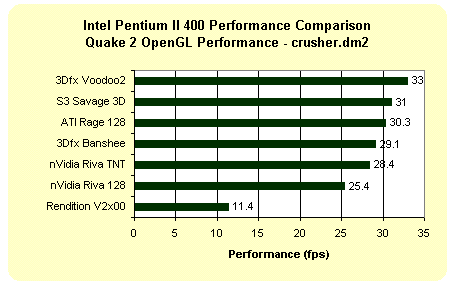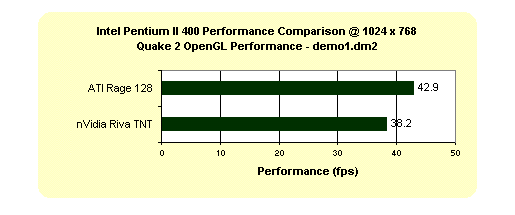

In-depth Gaming Performance Comparison Charts (click to enlarge respective graphs)
From a performance perspective, the Rage 128 is almost on par with the performance of the nVidia Riva TNT. The real differences emerge when you make the shift into 32-bit color, where the Rage 128 describes an almost non-existent performance drop when making the jump from 16 to 32-bit color as shown by the Half-Life scores.
The performance of the Rage 128 on lower end systems isn't bad at all, especially considering that even on the Pentium II 266 or Celeron 300 the benchmarks came out at around the 30 fps mark in Quake 2, even at higher resolutions. ATI has virtually removed all penalties associated with running at higher resolutions on slower processors, where there is very little, if any, performance degradation, including in the switch from 800 x 600 to 1024 x 768.
If you bump up the processor to something equipped with a faster L2 cache, such as the Pentium II 400, or even the Celeron A overclocked to 450, you'll begin to notice the Rage 128 skyrocket in terms of its performance at 800 x 600 and below while the improvement at 1024 x 768 remains present, yet not as great. The performance drop-off from 800 x 600 to 1024 x 768 is more boldly illustrated in the benchmarks on the two high end systems, the Pentium II 400 and the Celeron 450A, where the frame rate difference between the two resolutions approaches the 20 fps mark.










0 Comments
View All Comments